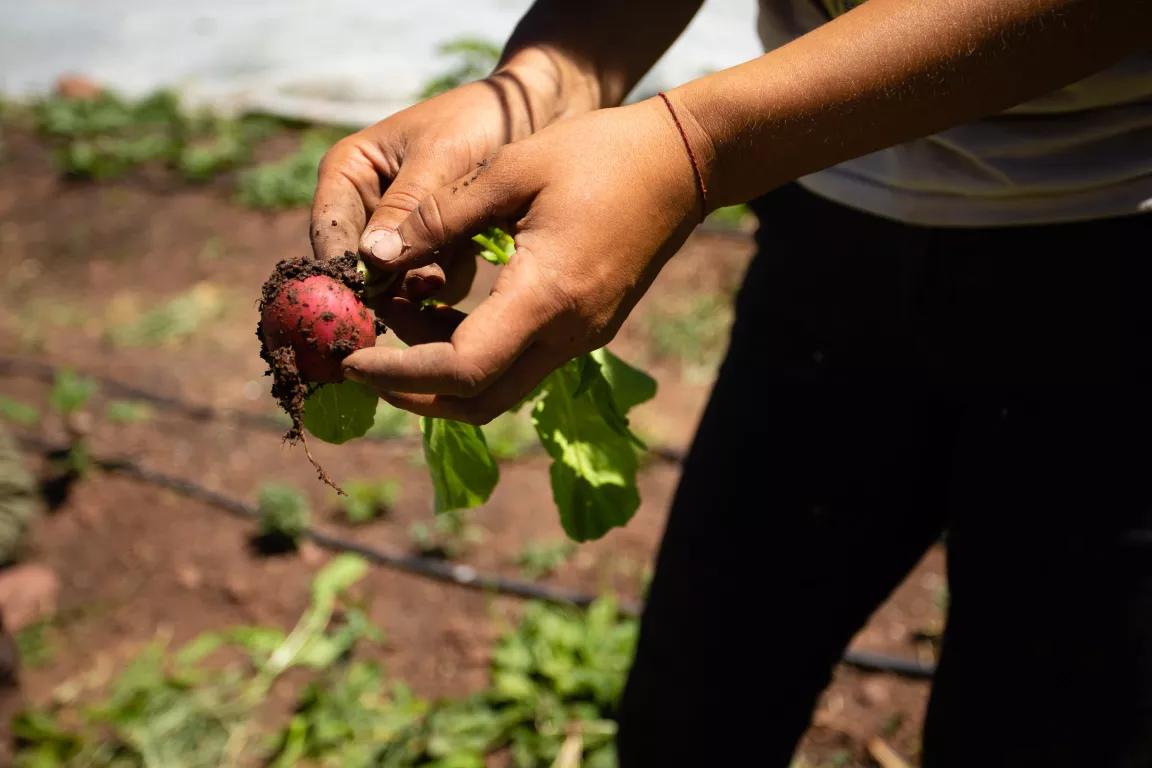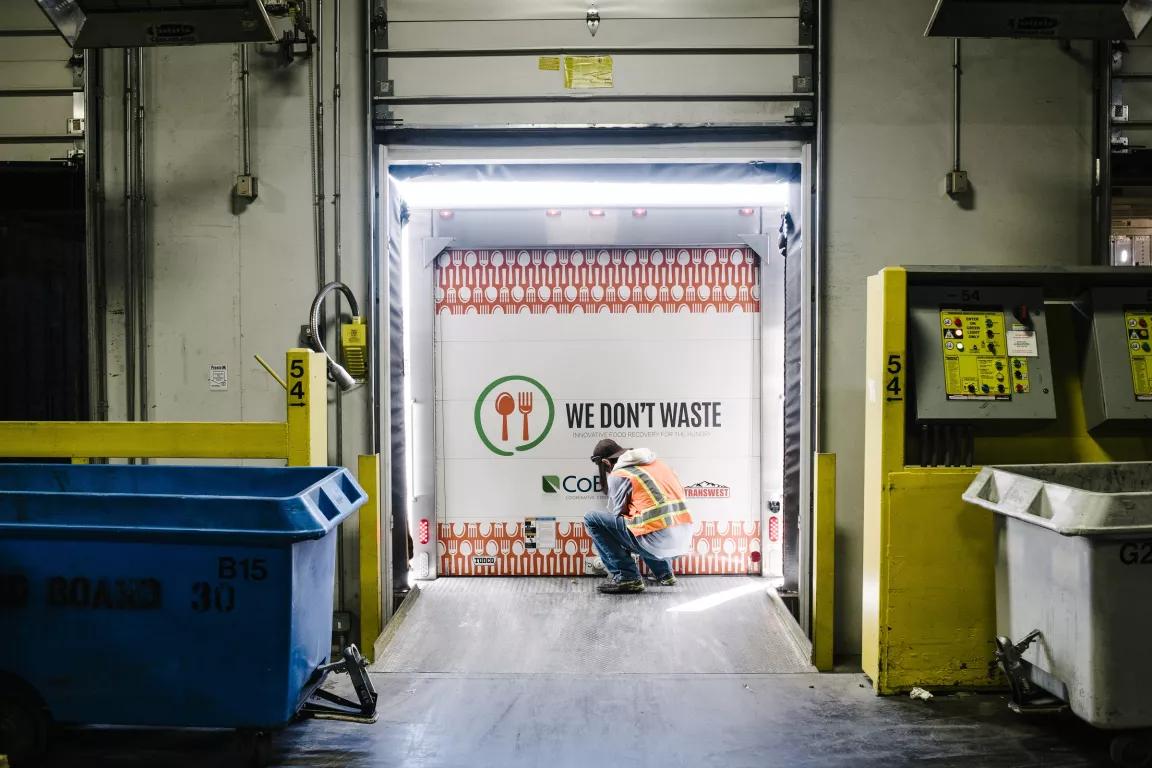Building a Healthier Food System
Climate, agriculture, food security, and our health are all intimately linked. NRDC is dedicated to strengthening this entire system, from farm to table.
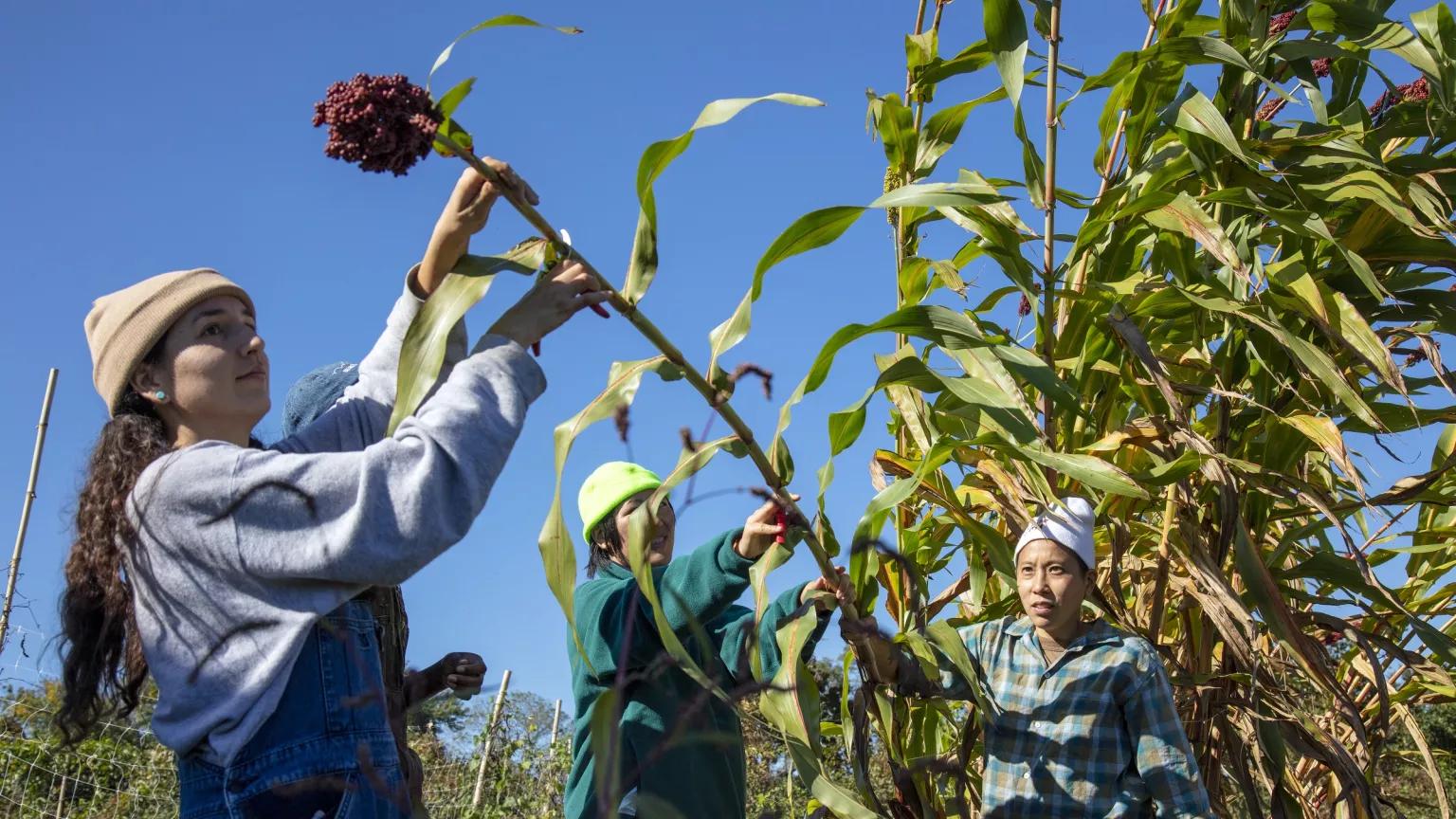
Sahar Coston-Hardy for NRDC
By 2050, we will need to feed a world population teetering on 10 billion—a statistic demanding our utmost attention, particularly when you consider that climate change will make growing food that much harder. Whether we’re working with farmers to improve soil health and foster greater equity in agriculture or partnering with cities to reduce food waste and tackle food insecurity, NRDC is determined to help build an efficient and sustainable 21st-century food system. To get there, we must first rethink many of the methods associated with modern industrial agriculture and relearn traditional practices that can protect crops, store more carbon in the soil, and help our land adapt to the realities of climate change. Then we must find new and better ways of saving and distributing food so that all communities are nourished. On both of these fronts, NRDC is linking up with communities on the ground who are leading the way.
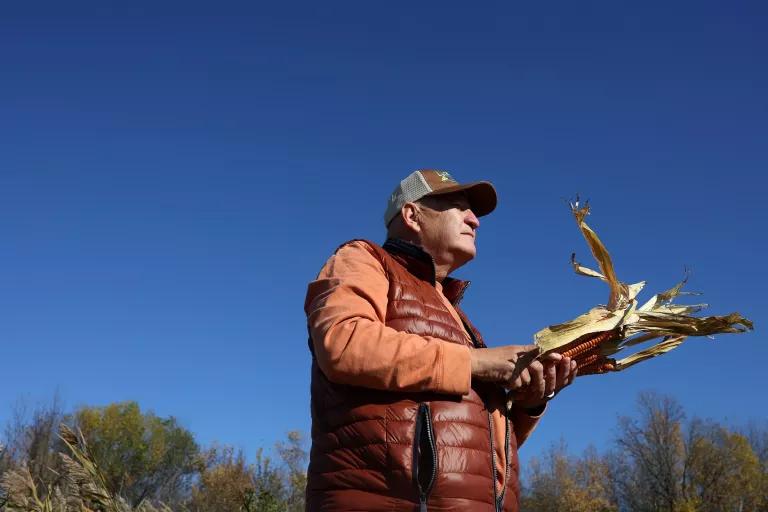
Stephen Silverbear McComber, a member of the Haudenosaunee Iroquois Confederacy, holding corn harvested from the community garden in Kahnawake Mohawk Territory, a First Nations reserve of the Mohawks of Kahnawáke
Stephanie Foden for NRDC
Transforming How We Grow Our Food
NRDC has long championed agricultural practices and policies that build soil health, limit the use of harmful chemicals, conserve water and other resources, and foster responsible and climate-friendly land stewardship. Regenerative agriculture unites these principles and applies best practices from the past—including those that Indigenous farmers have used for hundreds of years, since before industrialization became the norm—to create a better, more equitable food future.
Though there’s no strict rulebook, a fundamental principle underpins the regenerative agriculture movement. To sum it up: When we work with nature and prioritize things like soil health, reduced pesticide and fertilizer use, responsible water management, biodiversity, humane treatment of livestock, and equitable labor practices, we leave our land, waters, and climate in better shape for future generations. “Regenerative agriculture compels us to look at how every aspect of agriculture, including the supply chain, can be transformed into an equitable climate solution,” notes Arohi Sharma, a policy analyst in NRDC’s Nature Program who specializes in regenerative agriculture.
From late 2019 to early 2020, Sharma and her NRDC colleagues Lara Bryant, Claire O’Connor, and Ellen Lee interviewed more than 100 U.S. farmers and ranchers in an effort to learn more about what it means to live in harmony with the land. Their findings, published in late 2020 and early 2021, were designed to help inform recommendations to create a food system that can help fight our climate crisis. Specifically, their research informed NRDC’s work to set up and lead the coalition backing AB 125, a California bill introduced in December 2020 that would invest $3.3 billion in making the state’s food and farming systems safer, more sustainable, and more equitable. “AB 125 not only supports programs to scale up on-farm practices that fight climate change,” says Sharma, “but it also includes investments in the people and communities who grow our food and the infrastructure that gets healthy food from fields to plates.” As core members of the AB 125 coalition, Sharma and Lena Brook, NRDC’s director of food campaigns, played a role in many of the funding proposals that went forward this year, including investments in the state’s Healthy Soils Program, technical assistance for underserved farmers and ranchers, a new organic transition program, sustainable pest management, pollinator habitat conservation, and research into greenhouse gas reduction strategies for agriculture.
“From the water and microbes in our soil to the way we utilize cover crops to benefit farms and wildlife to the way we treat our farmworkers and process what they’ve grown, we have to restructure agriculture and its supply chain to steward all aspects of food and farming.”
Arohi Sharma, policy analyst, Nature Program
For nearly a decade, NRDC has joined with Midwest partners in calling for changes to the Federal Crop Insurance Program, which farmers increasingly rely on to manage weather-related risks. Advocates have recommended reforms that would incentivize farmers to implement climate-friendly practices that improve soil health and mitigate the risks associated with intensifying droughts, floods, and wildfires. In June 2021, those efforts bore fruit: The Risk Management Agency of the U.S. Department of Agriculture announced that it would be offering a crop insurance savings opportunity to farmers who plant cover crops. (Cover crops are grasses, legumes, and other plants grown after a cash crop is harvested, to protect the exposed soil from the baking sun and prevent erosion, suppress weeds, sequester carbon from the atmosphere, and minimize flooding.) Though the program isn’t yet permanent, as Bryant and O’Connor wrote at the time: “This is wonderful news, for farmers and the environment…That’s why we will keep working hard with our partners at all levels, state and national, to get policies in place that will lead to the increase in cover crop adoption that we need.”
In response to the COVID-19 crisis, NRDC’s Healthy People & Thriving Communities Program dedicated significant staffing support to advancing climate-friendly and equitable federal food and agriculture policies. And in August—amid heated debate regarding the scope of President Biden’s Build Back Better agenda—NRDC led an array of partners from environmental, agricultural, and racial equity groups in drafting a letter to congressional leadership, calling for at least $48 billion of the $135 billion being proposed for the food and agriculture sector to go toward sustainable agricultural solutions and resources for underserved producers. Those investments are needed “to begin to remedy the deep inequities that plague our food system,” noted NRDC attorney and sustainable food policy advocate Allison Johnson. And this advocacy is working—the joint efforts of a wide range of stakeholders will likely result in the largest investments in conservation since the Dust Bowl as well as critically needed resources for underserved farmers and ranchers. These investments will set the stage for an unprecedented focus on agriculture as a climate solution in the next Farm Bill.
Ending Food Waste
Experts estimate that growing, processing, cooling, transporting, and disposing of wasted food accounts for at least 8 percent of global greenhouse gas emissions. Food waste also accounts for 14 percent of all freshwater use, 18 percent of all cropland use, and 24 percent of all landfill inputs. It’s a problem that links our rural areas, where most of our food is grown, to our urban areas, where most of our food is consumed (and wasted). But as NRDC senior resource specialist Darby Hoover points out, cities are also proving vital in the quest for solutions.
Did You Know?
Food systems account for more than one-third of global greenhouse gas emissions.
In 2020, NRDC expanded the purview of its city-focused Food Matters project by creating the Food Matters Regional Initiative, which leverages connections between cities within the same region to achieve the program’s larger food waste reduction goals. The initiative seeks to reduce food waste through different means: preventing food from being wasted in the first place, rescuing surplus food and redirecting it to people in need, and composting food scraps.
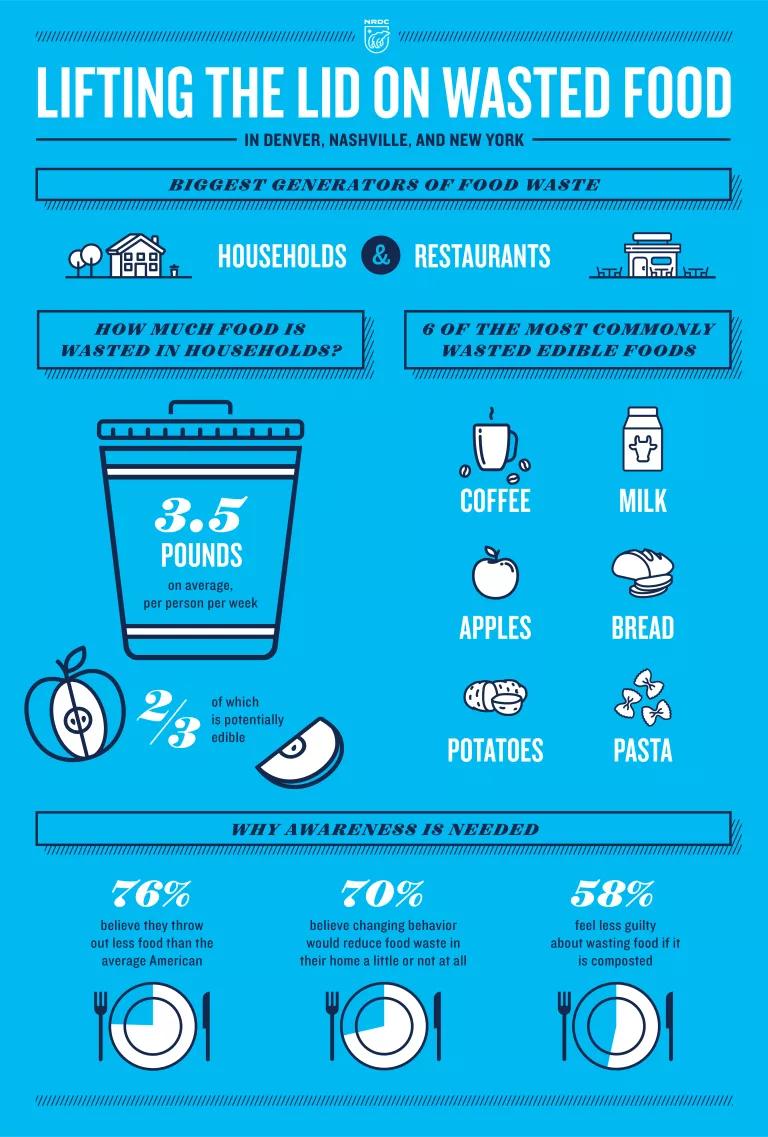
“Cities are well positioned to address wasted food for several reasons,” says Hoover. “There’s the desire to reduce costs associated with waste management, since food is typically the material making up the largest proportion of municipal solid waste. Tackling food waste can help cities meet their climate, sustainability, and zero-waste goals. And then there’s the need to address hunger among residents.”
By generating synergies between municipalities, the Food Matters Regional Initiative helps cities maximize the impact of their waste reduction programs, stretching their benefits across wide geographic swaths: the Mid-Atlantic, the Southeast, and—the initiative’s newest addition, as of January 2021—the Great Lakes region. So far, notes Hoover, the 15 participating cities have implemented nearly 80 different strategies, ranging from community workshops and food scrap drop-off programs to consumer-facing messaging campaigns and official mayoral proclamations. “In addition,” she says, “our partners are engaging local businesses in food waste reduction and food rescue strategies, supporting state and federal legislation related to food waste reduction, and meeting regularly with local stakeholders to ensure their campaigns are rooted in community needs.”
More Highlights from 2021

Advancing Clean Buildings and Transportation
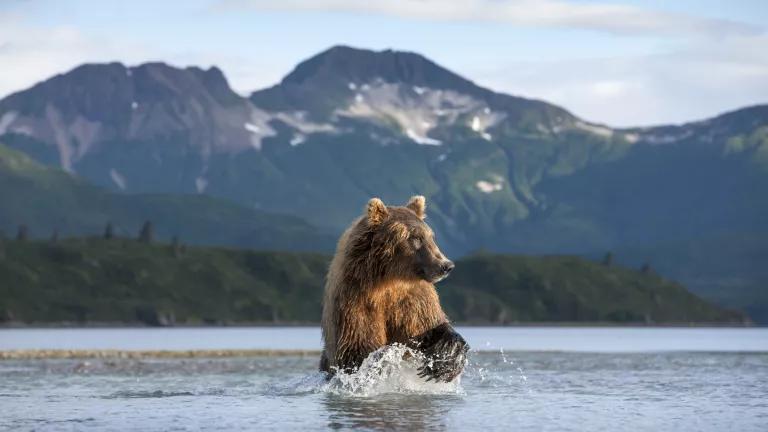
Championing Conservation as Climate Action
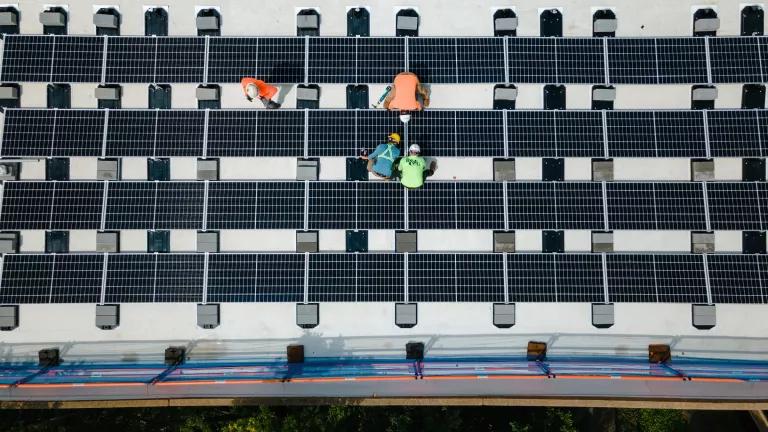
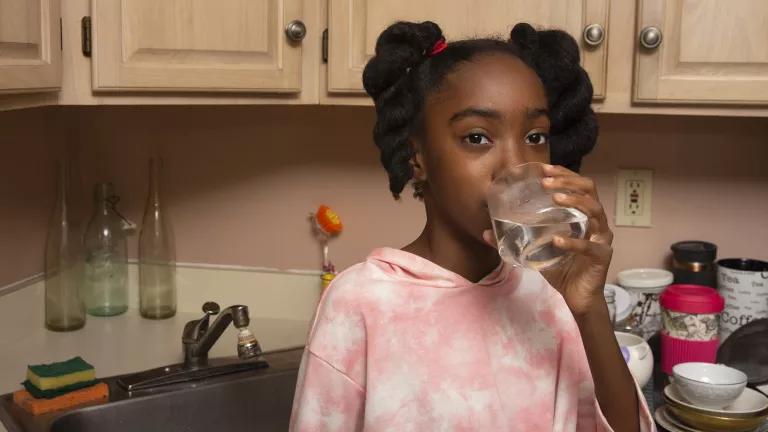
Protecting Public Health
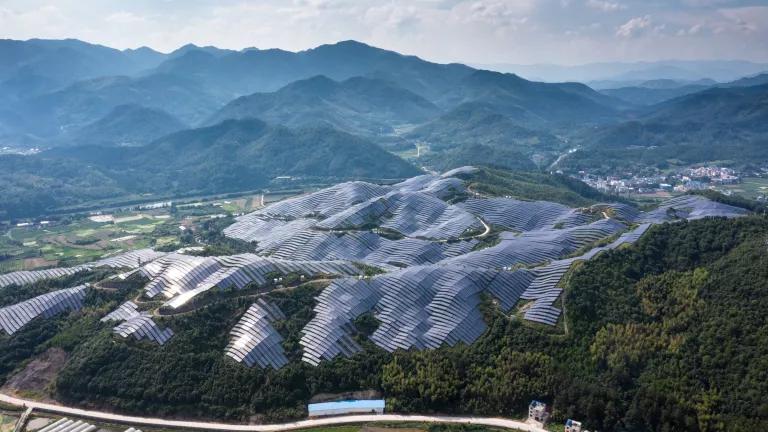
Advancing Global Climate Solutions
Time to Go Big
Check out the rest of our annual report for an overview of what we've accomplished in 2021.



